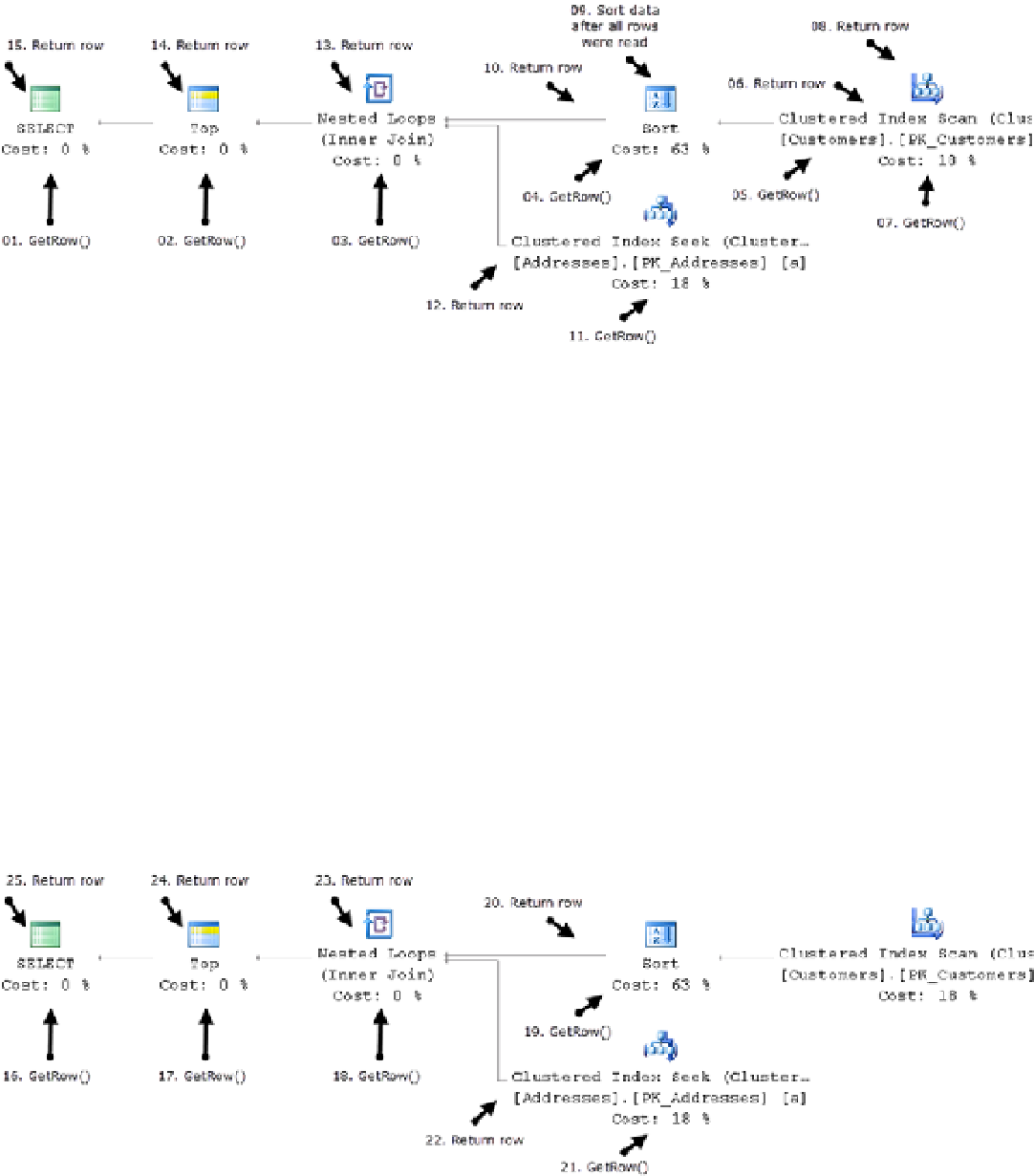Database Reference
In-Depth Information
Figure 25-6.
Row-based model: Getting the first row in the output
Let's look how SQL Server executes such a query on operator-by-operator basis. The
Select
operator, which is the
parent operator in the execution plan, calls the
GetRow()
method of the
To p
operator. The
To p
operator, in turn, calls
the
GetRow()
method of the
Nested Loop Join
.
As you know, a
Join
needs to get data from two different sources to produce output. As a first step, it calls the
GetRow()
method of the
Sort
operator. In order to do sorting, SQL Server needs to read all of the rows first, therefore
the
Sort
operation calls the
GetRow()
method of the
Clustered Index Scan
operator multiple times, accumulating
the results. The
Scan
operator, which is the lowest operator in the execution plan tree, returns one row from the
Customers
table per call. Figure
25-6
shows just two
GetRow()
calls for simplicity's sake.
When all of the data from the
Customers
table has been read, the
Sort
operator performs sorting and returns
the first row back to the
Join
operator, which calls the
GetRow()
method of the
Clustered Index Seek
operator on the
Addresses
table after that. If there is a match, the
Join
operator concatenates data from both inputs and passes the
resulting row back to the
Top
operator, which, in turn, passes it to
Select
.
The
Select
operator returns a row to the client and requests the next row by calling the
GetRow()
method of the
Top
operator again. The process repeats until the first 10 rows are selected. It is worth mentioning that the operators
kept their state and the
Sort
operator preserves the sorted data and can return all subsequent rows without accessing
the
Clustered Index Scan
operator, as shown in Figure
25-7
.
Figure 25-7.
Row-based model: Getting the subsequent row

